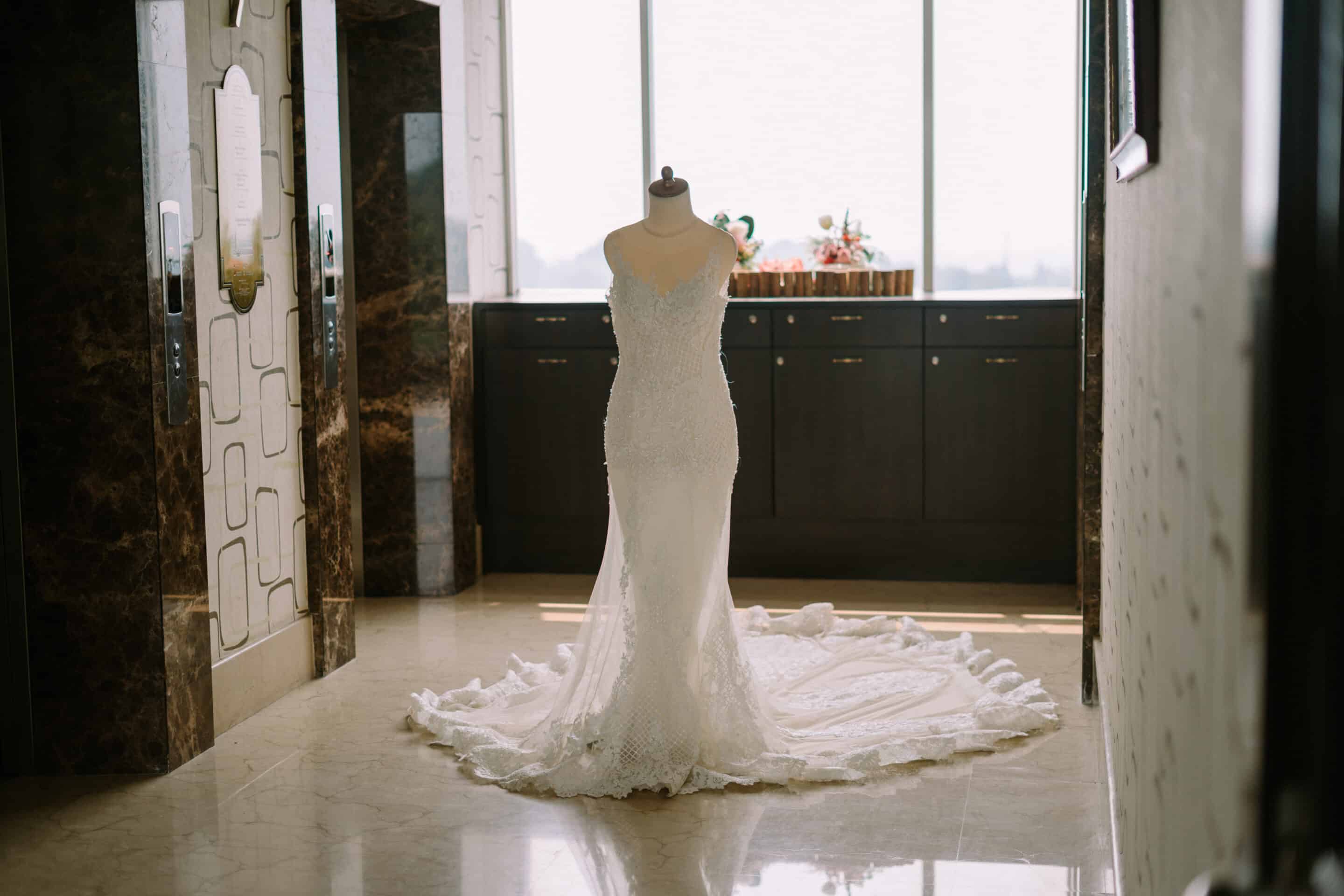Yellowing is a common concern for wedding gowns stored over time. But don’t worry—Chicago’s expert cleaners use advanced techniques and fabric-safe methods to bring your cherished dress back to life. Here’s how the process works and why professional restoration is the safest route. You will learn about how Chicago’s Cleaners restores yellowed Wedding Dresses.
Why Wedding Dresses Turn Yellow?
Fabrics like silk, satin, and polyester can yellow due to:
- Oxidation from air exposure
- Improper storage
- Plastic garment bags or acidic tissue paper
- Body oils or perfumes left untreated
When to Choose Professional Restoration?
If your gown has been stored for years and shows signs of yellowing or discoloration, home remedies won’t be enough. It’s time to trust heirloom gown preservation experts who know how to treat antique fabrics without damage.
Step-by-Step Gown Restoration in Chicago
Step 1: Fabric Assessment
Professionals examine the fabric type, stitching, and age to choose the safest method. Each gown is unique.
Step 2: Stain Detection
Ultraviolet light may be used to detect invisible body oils, food stains, or wine spills that cause yellowing.
Step 3: Treatment of Yellowed Areas
Specialized stain removers are gently applied to affected areas. The cleaners use pH-balanced solutions to prevent further discoloration.
Step 4: Immersive Fabric Bath
The entire gown is soaked in a temperature-controlled bath with gentle brightening agents that lift the yellowing.
Step 5: Controlled Drying & Shaping
Once cleaned, the gown is laid flat and reshaped to its original form. No wringing or high heat is involved.
Final steps and preservation
-
Steaming and Shaping:
The gown is carefully steamed and shaped to restore its original form and beauty.
-
Museum-Quality Preservation:
Gowns are often stored in archival-quality, acid-free boxes or chests to protect them from future damage and yellowing.
-
Breathable Storage:
The preservation methods often involve wrapping the gown in muslin or acid-free tissue paper to allow for breathability and prevent moisture buildup.
-
Documentation:
Some cleaners provide photographic documentation of the cleaning and restoration process to showcase the results and provide a record of the gown’s condition.
-
Additional Preservation Services:
Some cleaners offer additional services, such as replacing missing beads, repairing minor tears, or preserving accessories like veils or gloves.
Special Care for Vintage or Delicate Gowns
Vintage gowns require extra care due to their older thread and fabric types. Chicago’s professionals ensure:
- No bleach is ever used
- Custom treatments are applied
- Proper humidity and temperature are maintained during drying
External Tip Worth Checking
Curious about how yellowing starts and spreads over time? This Brides.com guide on gown discoloration gives excellent insight into fabric aging and long-term care.
Additional Wedding Gown Guides
- How to clean a silk wedding dress at home
- Wedding dress preservation tips
- Spot clean the wedding dress at home
FAQs:
Can a yellowed wedding dress be restored?
Yes. With professional treatment, yellowing can often be reversed safely.
How long does it take to restore a yellowed gown?
Most services take 2–4 weeks, depending on the condition and age of the dress.
What causes wedding dresses to yellow in storage?
Exposure to air, oils, and poor storage materials can oxidize the fabric.
Is yellowing common for polyester wedding gowns?
Yes, though they yellow less than silk. Polyester can still discolor over time.
Can I bleach my wedding dress at home?
No—never use bleach. It can weaken fabric fibers and cause irreversible damage.
Does professional restoration damage the dress?
Not at all. Experts use gentle, tested methods that preserve the gown’s integrity.
Is it expensive to restore a yellowed gown?
It depends on age, fabric, and severity. Chicago cleaners offer quotes after inspection.





